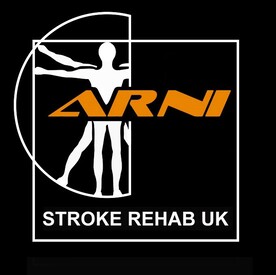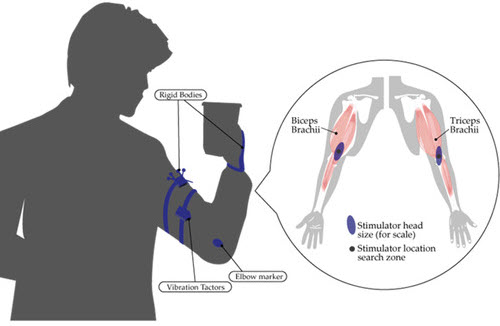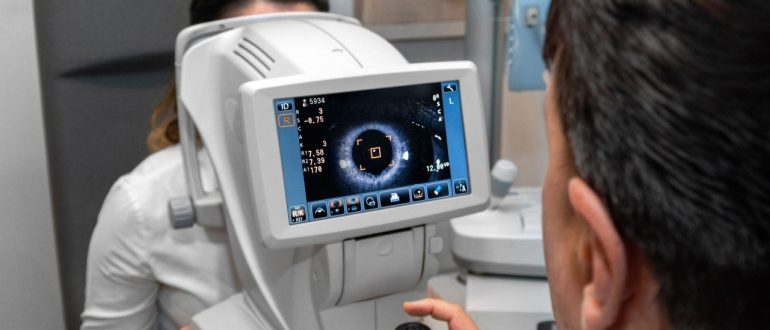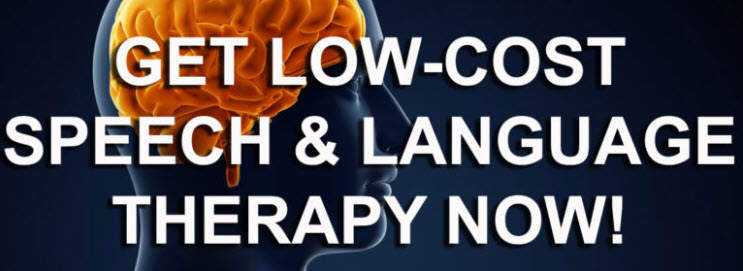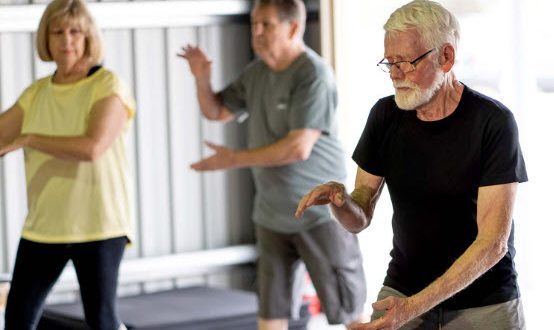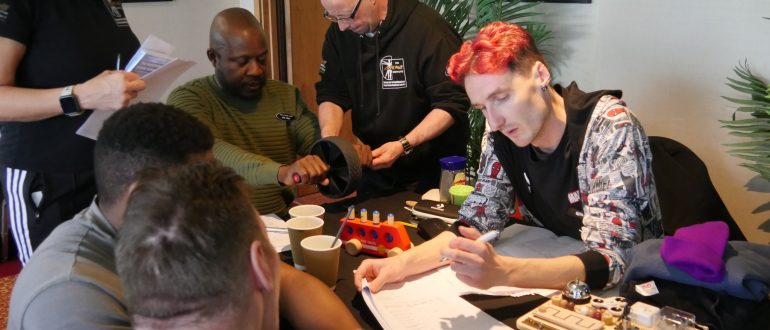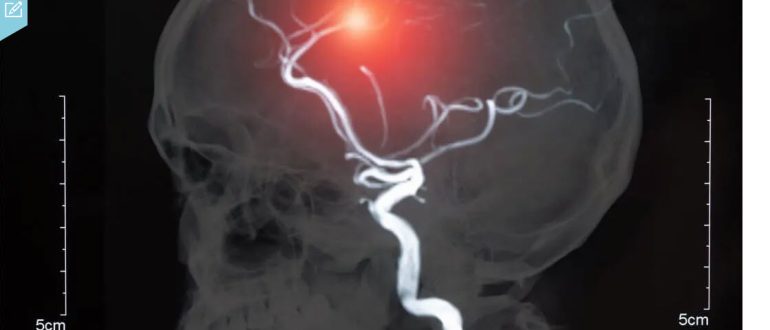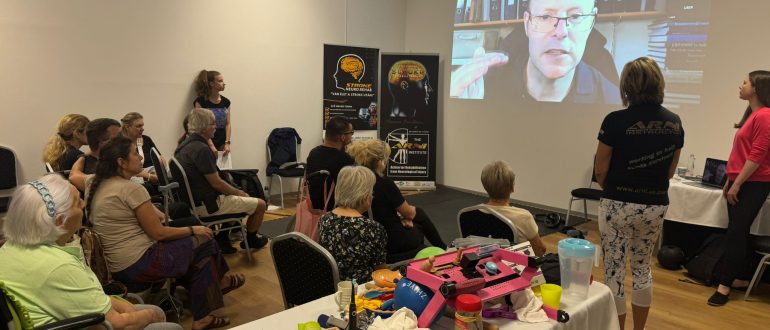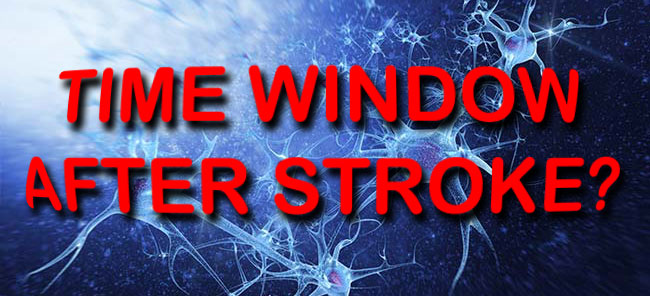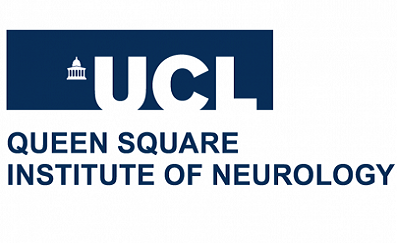A great present for a stroke survivor: ALL 7 ARNI exercise online videos.
Amongst many other things, you will learn from these how to get down and up from the floor, balance, walk and turn without problem, become strong and robust.. and tackle all sorts of activities of daily life that you hadn’t dreamed possible after stroke.
#ARNIstrokerehab #arnistrokecharity #stroke #strokesurvivors #neuroplasticity #neurorehab #neurorehabilitation #strokeexercise #neuroplasticity #strokesurvivorscan #neurorehab
www.strokesolutions.co.uk/product/successful-stroke-survivor-dvds-full-set-incl-bonus-dvd-trainin...
... See MoreSee Less
Whiston Hospital's Hyperacute Stroke Unit (HASU) has been officially ranked as the best in the UK! 🏆🏥 The team has achieved top spot in the latest national SSNAP results (Sentinel Stroke National Audit Programme). This fantastic achievement reflects the unit's commitment to providing outstanding, rapid care to patients when they need it most. They scored the highest possible A rating for the quality of care they deliver.
This achievement is even more impressive because SSNAP introduced tougher standards this year to reflect the latest evidence in stroke care. Despite these higher expectations, the teams from the Mersey & West Lancs Teaching Hospitals NHS Trust have delivered outstanding results.
Their success is also supported by their partnership working with the North West Ambulance Service and the Walton Centre, where they have 24/7 access to thrombectomy services, a vital intervention in stroke care which has huge benefits for eligible patients. 👏
A huge congratulations to all the dedicated staff at the HASU unit for their hard work and dedication in delivering world-class stroke care in Whiston! 🎉👏💙
#ARNIStrokeRehab #WhistonHospital #HASU #StrokeCare #NHS #TopRanked #SSNAP #StHelensAndKnowsley #HealthcareExcellence #Proud
... See MoreSee Less
Exercise: Seated marching
This exercise works extremely well for starting to build up co-ordination and timing in your lower limbs. This is a fine exercise for you to do if you are tired, having just done an effortful exercise like ‘getting up from the floor’, and you are not quite ready to attempt another effortful exercise. Don’t think that this is a restful exercise however, because it must be done with a high degree of control. You are attempting to control where your foot is coming back down onto the floor each time, and produce a left/right marching pattern. A slow skilful movement may well require more control than a faster movement, so your goal should be to match appropriate velocity to the marching and your current ability. But always push at the edges of your current ability. The most important aspect with this exercise in order to gain most control is to select a speed, then speed the rhythmic marching up and then slow it down a number of times.
From the book by Balchin, Tom:- The Successful Stroke Survivor
www.arni.uk.com
#neurorehab #strokerehab #arnistrokerehab #strokeexercise #ARNIstrokerehab #neuroplasticity #strokerehabilitation #strokerecovery
... See MoreSee Less
A new experimental drug named Scp776 is showing incredible promise for acute ischemic stroke patients, especially those who miss the critical initial treatment window! 🤯💊
Currently, patients arriving after a few hours have very limited drug options, but Phase 2 trial results for Scp776 (known as the ARPEGGIO study) suggest this could soon be historical. This is exciting news because the drug was tested on patients up to 24 hours after stroke onset, a population that currently has no approved drug treatment options beyond mechanical clot removal.
Scp776 works by delivering a growth factor (IGF-1) to injured cells to stop them from dying, effectively helping to save the brain. Patients in the trial showed clinically meaningful improvements in stroke severity and a 15% increase in the proportion of patients achieving functional independence at 90 days compared to a placebo group. Plus, the drug was safe and well-tolerated in the study!
ARNI Stroke Rehab UK says that while these are findings from a small Phase 2 study and more research is needed, the potential impact is very promising and could revolutionise stroke care for thousands of people. Let's hope this breakthrough continues to progress through clinical trials! 🙏💙
www.arni.uk#ARNIstrokerehabr#strokeawarenesse#MedicalBreakthroughr#scp776c#brainhealthe#sciencenewse#hopeforstrokepatientsients
... See MoreSee Less
On Friday, December 5, 2025, our very own brilliant Senior ARNI Instructor, Petr Pokorny , is undertaking a epic challenge! 🏃♂️💨 He will be running 100 miles along the South Downs Way, from East Dean to Worthing and back again! 🤯 This astonishing feat is all in an effort to raise awareness and much-needed funds for ARNI (Action for Rehabilitation from Neurological Injury).How absolutely brilliant is that?! 🤩
Petr regularly does efforts to raise funds for ARNI - his dedication to supporting stroke survivors goes is truly inspiring. Let's show Petr our support! Every donation helps ARNI continue their vital work. Sponsoring him is super easy: just head over to his JustGiving page via the link below (or in the comments!). Every single pound makes a difference. Please donate what you can and share this post far and wide! Let's cheer him on and help him reach his goal of £1,500! 💪💙✨ THANK YOU SO MUCH!!
www.justgiving.com/page/petr-pokorny-5?new#arnit#strokerecoveryk#100milerun1#southdownswayt#charitychallengey#petrpokornye#inspirationn#justgivingJ#runforarniR#communitysupportitySupport 💖
... See MoreSee Less
Approximately 40% of stroke survivors experience this difficulty: to comprehend or produce spoken or written language caused by a cerebrovascular accident. In half of these cases the language impairment still persists one year post-stroke. Aphasia has wide-ranging effects on the ability to function and quality of life of stroke survivors and easily leads to social isolation.
If you need help, ARNI SLT Telerehab can now help YOU, right now, wherever you are in the world!
The latest evidence shows clearly that you can conquer aphasia very successfully with the help of speech and language therapy.
And it also shows that SLT Telerehab is just as effective as in-person, face to face treatment.
We have a team of highly experienced low-cost specialist SLTs (all post-grads from Universities such as UCL, the University of Cape Town etc) who are available to help you right now, in your home, via Zoom. You get a one to one hourly service, based around your diary needs, from the comfort of your own home, with a highly experienced specialist speech and language therapist. Please enquire to arni.uk.com/get-remote-speech-language-help-now/ !
#aphasia #strokesurvivors #strokerecovery #strokerehabilitation #strokerehab #aphasiaawareness #neurorehabilitation #arni #exerciseafterstroke #strokeexercise #strokerecoveryexercises #neuroplasticity #ARNIstrokerehab
www.arni.uk.com
... See MoreSee Less
Looking forward to listening to Gabi talk about ARNI on the 11th December to the LCSP Register of Remedial Masseurs & Manipulative Therapists !Introducing ARNI 🤝
We’re delighted to announce a new collaboration with ARNI - Action for Rehabilitation from Neurological Injury.
They’ll be delivering a special tutorial for LCSP members on 11th of December, introducing:
- Rehabilitation protocols for Neurological cases
- The support ARNI offers stroke survivors
- Their specialist training programme for those interested in becoming a Stroke Rehabilitator
ARNI is a nationwide charity supporting stroke survivors after hospital therapy ends, with 170+ accredited instructors delivering evidence-based, functional rehabilitation in the community. Their highly skilled instructors specialise in physical coping strategies, functional task practice, stroke-specific resistance training, and innovative techniques to rebuild confidence and independence.
Our tutorial will be led by Gabi, Senior ARNI Instructor, physiotherapist, and International Coordinator at the ARNI Institute. With 25+ years of experience and extensive specialist training, Gabi has supported hundreds of stroke survivors to regain functional independence through ARNI’s evidence-based methods.
We’re excited to bring this fantastic opportunity to our members - save the date!
#arnistrokecharity ARNI Stroke Rehab & Recovery #neuroplasticity #neurorehab #exerciseafterstroke #exercisetherapy
... See MoreSee Less
Gearing up already for ARNI one-to-one training (in a group) this Saturday afternoon - and a reminder that it's customary to make some cake to bring along as part of pre-rehab efforts, mainly because Dr Tom is partial to a nice bit of cake ;) And who isn't? ;) Training + cake = successful stroke survivor ! ;)
... See MoreSee Less
Exercise: Seated marching
This exercise works extremely well for starting to build up co-ordination and timing in your lower limbs. This is a fine exercise for you to do if you are tired, having just done an effortful exercise like ‘getting up from the floor’, and you are not quite ready to attempt another effortful exercise. Don’t think that this is a restful exercise however, because it must be done with a high degree of control. You are attempting to control where your foot is coming back down onto the floor each time, and produce a left/right marching pattern. A slow skilful movement may well require more control than a faster movement, so your goal should be to match appropriate velocity to the marching and your current ability. But always push at the edges of your current ability. The most important aspect with this exercise in order to gain most control is to select a speed, then speed the rhythmic marching up and then slow it down a number of times.
From the book by Balchin, Tom:- The Successful Stroke Survivor
www.arni.uk.com
#neurorehab #strokerehab #arnistrokerehab #strokeexercise #ARNIstrokerehab #neuroplasticity #strokerehabilitation #strokerecovery
... See MoreSee Less


![]()

